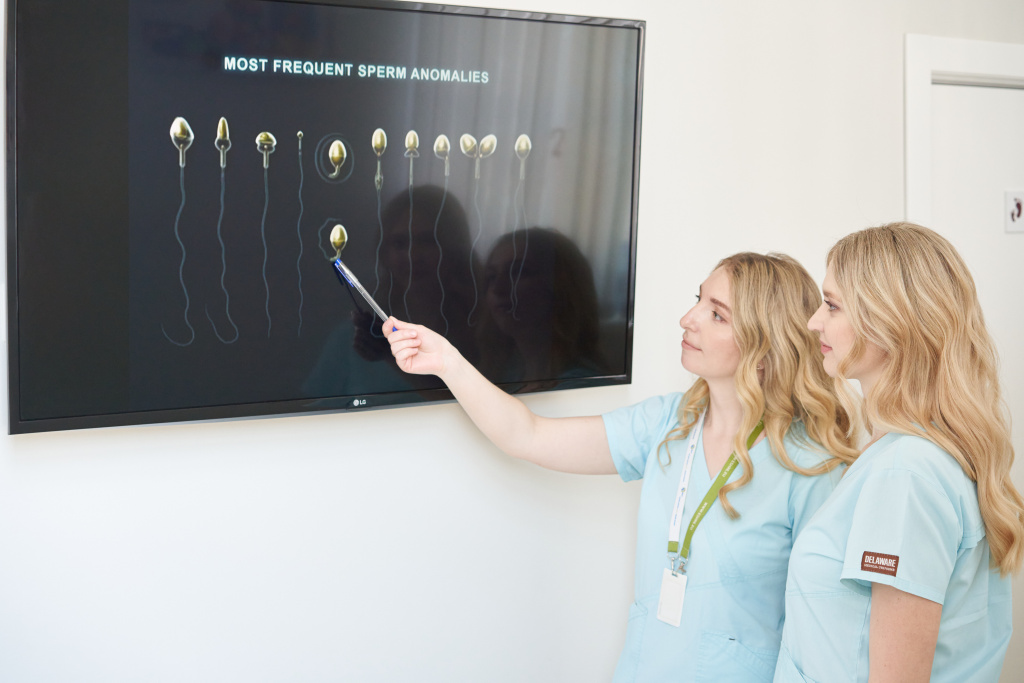Male infertility treatment

Male infertility factor is the cause of infertility in 30-50% of all cases.
To make a diagnosis of male infertility, you first need to pass a spermogram. This test measures a number of parameters:
- Obyom: the number of milliliters of sperm produced in one sample;
- Sperm count in ejaculate;
- Motility: percentage of progressively mobile sperm;
- Morphology: percentage of sperm with the correct shape.
In case of deviation from normal parameters, the analysis should be resubmitted after 3 months
The changes in the spermogram can be as follows
- If there is a decrease in sperm concentration less than 15 million/ml of oligozoospermia and a complete absence in ejaculate - azoospermia. With this type of pathology, the patient should undergo a genetic examination of the blood. Chromosomal abnormalities and genetic mutations account for almost 10-15% of all cases of male infertility. In this case, the probability of embryo aneuploidy increases by 10% and genetic examination of embryos is recommended during the IVF procedure.
- Motility or percentage of progressively mobile sperm less than 32% - asthenozoospermia
- Sperm content of normal morphology less than 4% - teratozoospermia. But this does not say that this pathology leads to the appearance of offspring with birth defects. There is little evidence to support this theory.
In some cases, additional studies are carried out to clarify the diagnosis
- Presence of antispermal antibodies - MAR test
- Sperm viability test
- Hormones (prolactin, FSH, LH, testosterone, TSH, etc.)
- Infectious screening
- Andrologist consultation
TREATMENT OF MALE INFERTILITY
Infertility treatment in men is carried out to improve the quality of sperm, to obtain pregnancy in the natural cycle, or in the IVF or ICSI program.
To improve sperm quality, the following methods are used:
- Hormone Therapy - Spermatogenesis Stimulation.
- Assisted reproductive technology methods (IVF/ICSI artificial insemination).
- In the complete absence of sperm in the ejaculate biopsy of the testicles or appendages, the following surgical methods of sperm production (TESA. MESA, PESA, TESE) are used.